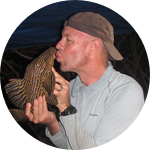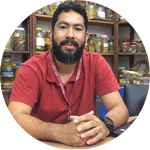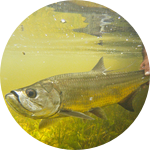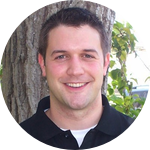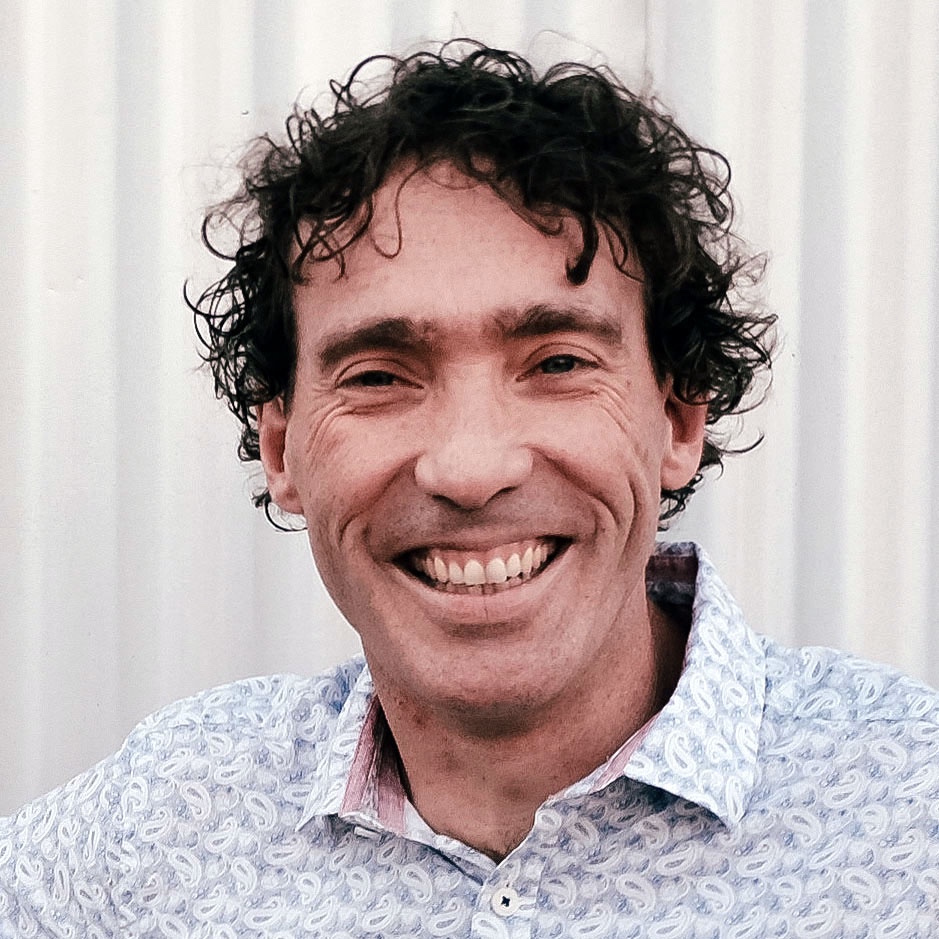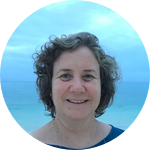About This Project
Sawfish are one of the most endangered fish in the world, and Atlantic tarpon are considered vulnerable. Both fish move into salty and fresh water, but we don't understand these movements. Knowing more could help identify ways to protect both species. Luckily, tarpon scales and sawfish rostral teeth store chemistry that can reconstruct the movements they make. We hypothesize that teeth and scales will allow is to reconstruct the movements of both fish in a non-lethal way.
Ask the Scientists
Join The DiscussionWhat is the context of this research?
Tarpon are a glamorous and important game fish, and also food fish in some places. But, they face challenges that are mostly human caused including water quality problems, temperature extremes, and loss of nursery habitat due to shoreline development.
Sawfish are deeply, deeply endangered. Honestly, with a nose like that (Yes, I know, it's a rostrum not a nose. sorry!), fishing nets are a bit of problem and they are often caught by accident. People also sell their dried rostra on the black market, and here in Brazil the teeth are used "spurs" in illegal cock fighting.
Both species live a long time, and sawfish don't reproduce quickly, so it takes both species a long time to recover from population declines.
What is the significance of this project?
Both tarpon and sawfish use fresh and brackish water along the shore. However, we don't completely understand when, or why, these fish move between salty and fresh water.
This is important in order to plan ways to conserve them...things like where to conserve nearshore habitat, or where to restrict fishing when sawfish are giving birth nearby (Yes, they give birth to pups WITH THE SAW! I'll explain later).
Unfortunately, both species are really hard to study. Tarpon move a lot, so it's difficult to track them. Sawfish, well...honestly...there are so few left that tracking them is impossible. That's why our chemical techniques are important. They provide a critical window into the details of how these fish move and where they go.
What are the goals of the project?
We have two goals for this project.
The first is to gather data from the entire Amazon coast of Brazil to understand the movement patterns of tarpon here. We can then add our work to studies done by our collaborator, Dr. Benjamin Walther, to see if there are differences in behavior across the entire range of tarpon. Also, we will compare otoliths to scales in order to validate the method scientifically.
Second, this work will give us solid evidence for the use of sawfish teeth as a record of movement. We are the only group to have tried this. It worked! (Hoorray!!), but we only had two rostral teeth to work with. We need a larger sample size to really prove that this works. If it does, this will be an important tool.
Budget
Our budget reflects the absolute minimum costs required to run the initial samples in our study. We plan to run quite a few more, but while these techniques are powerful they are also expensive. This initial dataset will get us started and give us the data we need to prove to funding agencies that our work is fundamentally sound and worthy of larger grants.
Laser-ablation inductively-coupled plasma mass spectrometry (Yes, it's a mouthful!! Lets use LA-ICP-MS from now on) allows us to measure the changes in chemistry in each scale, otolith or tooth. The elements this method measures, like strontium and barium, are important to understand where a tarpon or sawfish was, and how salty the water was there.
Carbon and Nitrogen stable isotopes analysis measures the stable carbon and nitrogen isotopes in a sample. It can tell us how high the fish was on the food chain at that point in it's life.
Endorsed by
 Project Timeline
Project Timeline
We plan to collect all the tarpon samples by November 2019. All the sawfish samples are already in the team's possession.
The biggest hurdle will be exporting samples for analysis (the process is difficult, but these tools just aren't available in Brazil). Analysis will take 6 months. A peer-reviewed publication takes time as well, but we will update you with Lab Notes along the way and post a pre-print as soon as results are done.
Nov 18, 2019
Project Launched
Nov 29, 2019
Collect the initial sample set of tarpon scales and otoliths by the end of my Fulbright Grant
Nov 29, 2020
Export/import permits finalized and samples sent to United States for preparation and analysis
May 30, 2021
All analyses completed
Sep 29, 2021
Results released as pre-prints to BiorXive
Meet the Team
Jens Hegg
I am an assistant professor of Biology at Gonzaga University in Spokane Washington. My academic background includes a PhD from the University of Idaho and a Fulbright post-doc in the Brazilian Amazon.
My scientific interests are in the ecology of animal movement and migration, specifically the trade-offs that animals must balance to optimize their fitness within a complex and changing environment full of competition from other organisms and rapidly changing evironmental conditions.
Within this focus on life history and migration I use isotopic tracers, bio-energetic modeling, growth trajectories and geospatial modelling techniques to understand the selective pressures that shape the life-history of fish populations across the landscape.
I maintain active research in several areas: Amazonian sawfish movement and life-history, Fall Chinook salmon in the Snake River of Idaho, giant migratory catfish in the Amazon basin of Brazil, geologic prediction of strontium isoscapes, and data sonification and virtualization for data exploration, artistic expression and scientific outreach.
This video is a funny and instructive introduction to me and the basics of my work.
Outside ecology I have many interests, coming to academia on a circuitous path, starting with a B.A. in Biology from Macalester College in 2000. In the intervening years I worked in the field studying endangered river mussels in the Hornbach Lab, the distribution of non-game fish with the Minnesota Pollution Control Agency among others. I also spent significant time working in research and development laboratories; in renewable bio-plastics with Natureworks LLC, and designing new coronary stents with Boston Scientific which lead to 4 US patents.
Jorge Luiz Silva Nunes
Graduado em Ciências Biológicas pela Universidade Federal do Maranhão (2000), mestre em Oceanografia pela Universidade Federal de Pernambuco (2003) e doutor em Oceanografia pela Universidade Federal de Pernambuco (2008). Atualmente é Professor Associado II da Universidade Federal do Maranhão. Atua no curso de graduação em Oceanografia do Departamento de Oceanografia e Limnologia em São Luís, no Programa de Pós-Graduação em Biodiversidade e Conservação e no Programa de Pós-Graduação em Saúde e Ambiente. Recentemente compõem o quadro de professores associados da rede de Biodiversidade e Biotecnologia da Amazônia Legal (Doutorado, rede Bionorte). Área de atuação correspondente à ecologia marinha, biologia marinha e ictiologia. Foi bolsista de Produtividade em Pesquisa FAPEMA 2015-2017 e 2019. Consultor Científico do Projeto Orla Viva. Editor do Boletim do Laboratório de Hidrobiologia. Líder do Grupo de Estudos de
Elasmobrânquios do Maranhão. Líder do Grupo de Estudos de Peixes Tropicais do CNPq/UFMA
Tommaso Giarrizzo
As visitor professor at Universidade Federal do Pará, my overarching goal is to provide a general and predictive understanding of aquatic ecology, and to promote the application of basic ecological science to water quality and conservation. I have 20 years' experience working in the Amazonian coast in research projects assessing the conservation of fish fauna and marine habitats. I have now published 87 papers in international journals, with a further four in press, 10 under review, 10 book chapters, and more than 170 papers in conference proceedings. A central focus of my research has been on freshwater and marine ecosystems and how human influences affect water quality and biological integrity. Microplastic pollution, heavy metals, stable isotopes analysis and use underwater stereo-video technology for sampling the relative abundance and lengths of fish remotely are major highlights of my studies.
Patricia Charvet
I have been studying sawfish in South America since 1998 and over these years received lots of sawfish parts donations from Brazilian fishers by asking them to provide samples that would help towards improving their management and conservation. The study in collaboration with Jens Hegg (microchemistry), Annmarie, Nicole and Vanessa (genetics) will certainly be extremely valuable to better understand biology, habitat use, and population structure of sawfish, therefore contributing to their conservation in Brazil.
Additional Information
It's important to point out that both of the methods we're using here are non-lethal.
We can collect scales from tarpon without killing the fish. Many of our samples from here in Brazil will be from fish markets, however. It's legal to fish for them here, and the populations are reasonably strong. This allows is to compare data from lethal samples (otoliths or eye lenses) to the scale-based method. This validation is important scientifically. But, the end goal is to have a non-lethal method that helps us understand the species in more detail.
It is also possible to collect a tooth from a sawfish without undo harm...but...we aren't even doing that. All of our sawfish samples are from dried rostrum that have been donated to our group. There are thousands of these dried rostrum in museums and private collections around the world. While we can't go back in time and keep these sawfish alive, at least we can use them for science. They represent a possible treasure trove of information about the species, without ever having to hurt a sawfish.
Project Backers
- 67Backers
- 101%Funded
- $5,171Total Donations
- $77.18Average Donation
